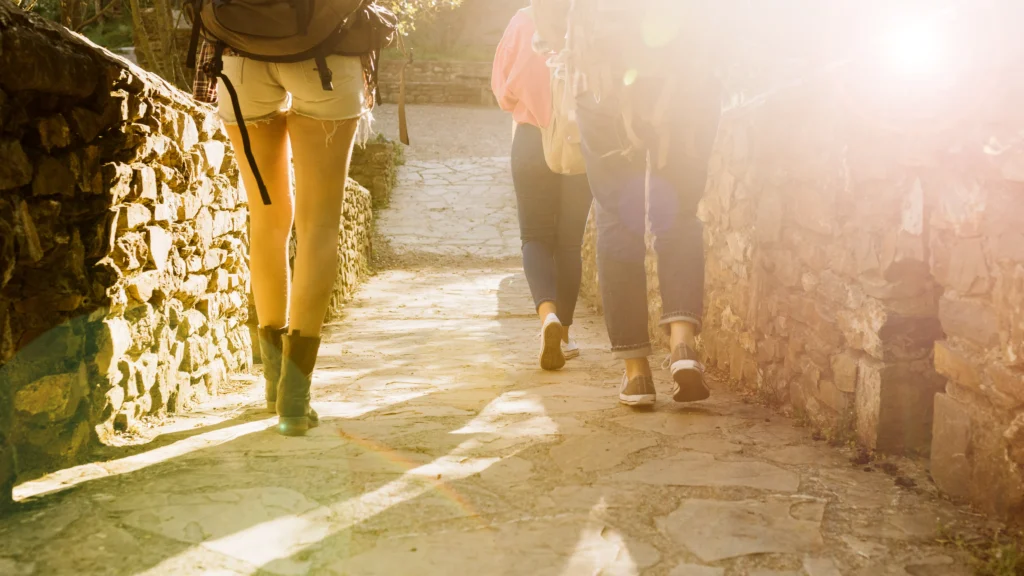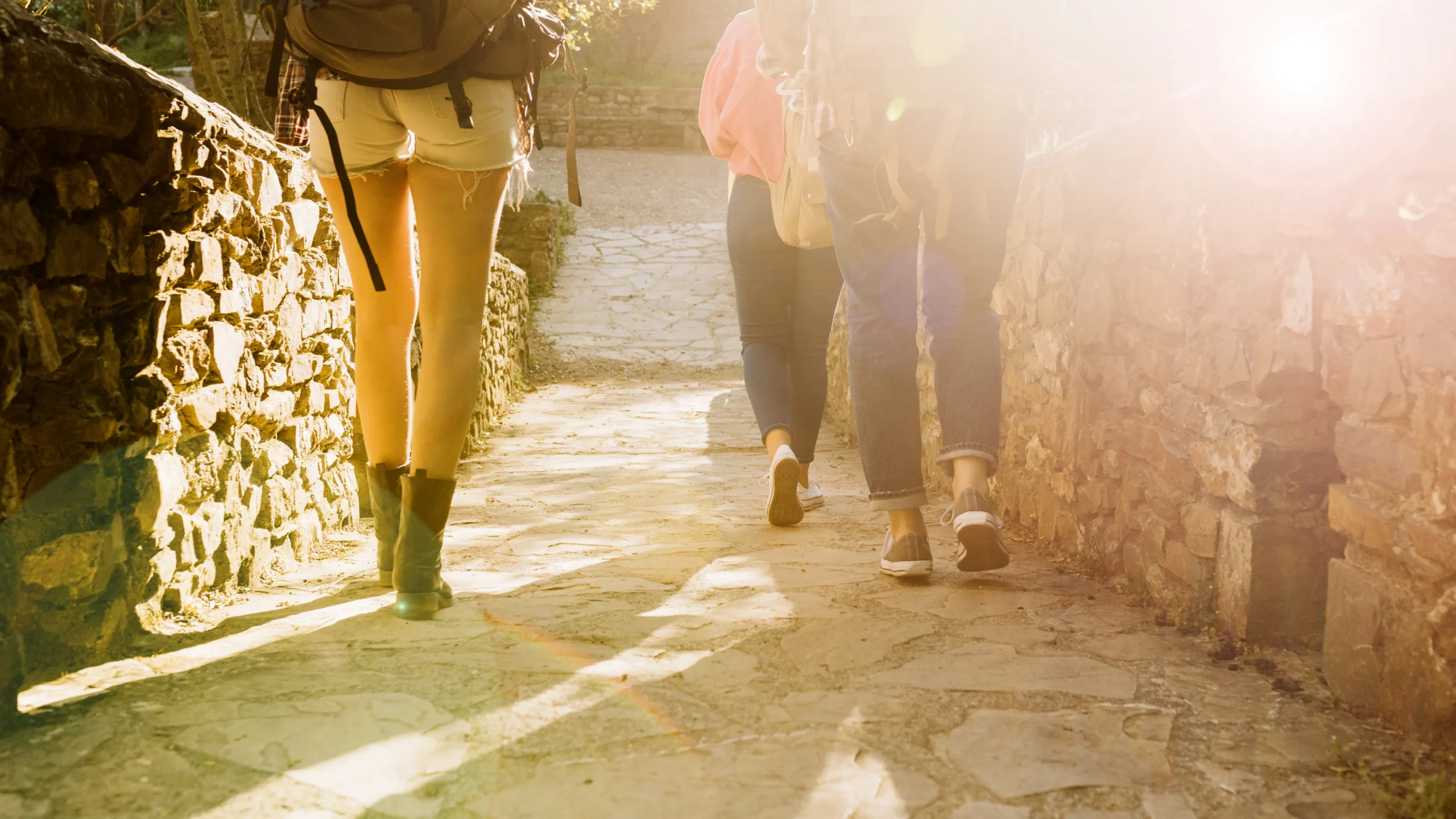Resume este artículo con IA
Every year, thousands of pilgrims ask themselves: what’s the best time of year to do the Camino de Santiago? There isn’t a single answer, because it depends on what you’re looking for: weather, company, peace and quiet, or festivity. Each season offers advantages and drawbacks, and knowing them will help you plan your route in the best way.
In this article we look at the Camino in winter, summer, spring and autumn, highlighting what you can expect at each time of year.
The Camino de Santiago in winter
Winter is the most demanding season. Low temperatures, snow and ice in mountainous areas mean that only a small number of pilgrims are encouraged to walk during these months. In addition, the days are shorter and the limited daylight hours make it necessary to plan shorter stages.
Despite these difficulties, winter has its charm. The Camino offers absolute tranquility, public hostels (albergues) remain open all year, and costs are usually lower, both for accommodation and food. However, some private hostels close, so it’s a good idea to plan each stage carefully. As for routes, the Camino del Norte is a good option, as the coastal climate is milder than inland. There is also the historic variant called the Winter Way (Camino de Invierno), designed to avoid the tough climb to O Cebreiro in the coldest months.
The Camino de Santiago in summer
Summer is the busiest season on the Camino. It coincides with holidays, good weather and, above all, with the feast of Saint James the Apostle on July 25, when the city of Compostela is filled with celebrations. In 2024, for example, a record 499,242 pilgrims arrived in Santiago, and many of them did so in the summer months.
The weather is generally stable and dry, although in the interior of the peninsula temperatures can easily exceed 30 °C, which makes it advisable to start early to walk before the hottest hours and to wear light, breathable clothing. The big drawback is overcrowding: many public hostels fill up quickly, which means booking private accommodation in advance if you want to avoid problems.
At this time of year, routes such as the Camino del Norte or the Portuguese Way along the coast are ideal, as they offer milder temperatures and fresh scenery compared with the heat inland. The French Way (Camino Francés), meanwhile, is perfect for those who want to share the experience with a large number of pilgrims.
The Camino de Santiago in spring
Spring—especially April and May—is considered by many to be one of the most recommended times. Temperatures usually range between 10 °C and 20 °C, with cool mornings and mild afternoons. Although rain is common, especially in the north, it usually doesn’t prevent progress and helps keep the landscapes green and full of life.
Pilgrim numbers are moderate, which means there’s atmosphere without the summer crowds. Most hostels are open and it isn’t hard to find a bed. In addition, the French Way in spring lets you enjoy the Jacobean tradition in all its splendor, while more demanding routes like the Primitive Way (Camino Primitivo) are more manageable with mild temperatures.
The Camino de Santiago in autumn
Autumn—especially September and October—shares many of spring’s advantages. The weather is usually mild, with temperatures between 10 °C and 22 °C, and although rainfall increases as the season progresses, it generally isn’t a major obstacle.
The autumn landscape, with its golden and reddish hues, makes the experience especially beautiful. What’s more, the flow of pilgrims is balanced: there’s enough ambience to share the Camino, but without the summer crowds. The Primitive Way in autumn offers spectacular views, while the English Way (Camino Inglés), with its shorter route from Ferrol or A Coruña, is gaining more and more followers at this time of year.
Conclusion: the best time of year to do the Camino de Santiago
There isn’t a single answer to the question of the best time of year to do the Camino de Santiago, since each season offers a different experience. Winter is perfect for those seeking solitude and lower costs, though with the challenge of the cold. Summer guarantees festivities, atmosphere and open services, but also heat and crowds. Spring and autumn, for their part, offer the perfect balance of weather, number of pilgrims and accommodation availability, which makes them the preferred seasons for many walkers.
Whatever you choose, the most important thing is to plan ahead and approach the experience with an open mind. The Camino de Santiago always gives the pilgrim much more than they expect, no matter the time of year they walk it.
You have not enough Humanizer words left. Upgrade your Surfer plan





